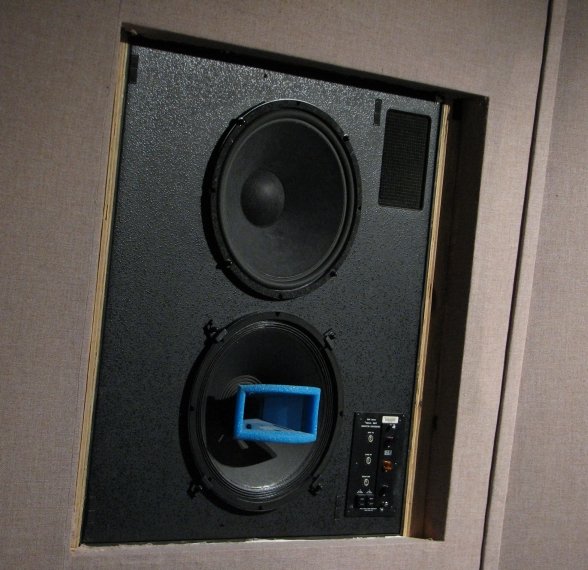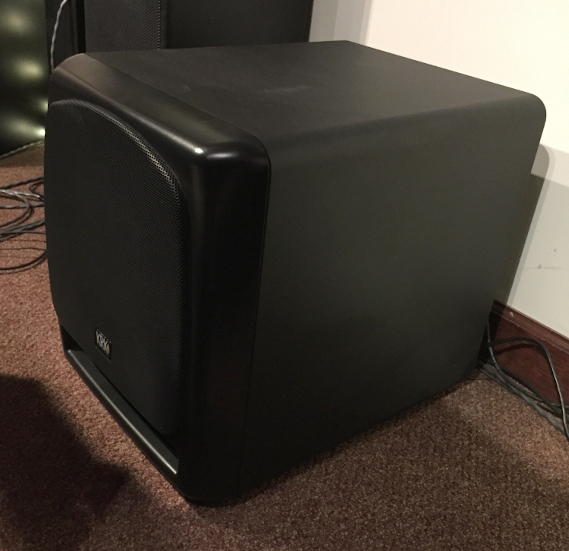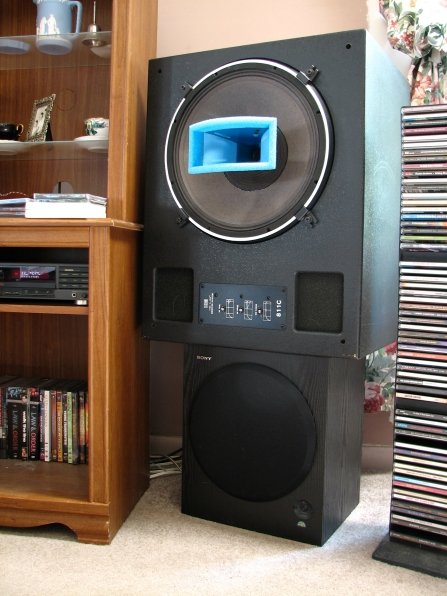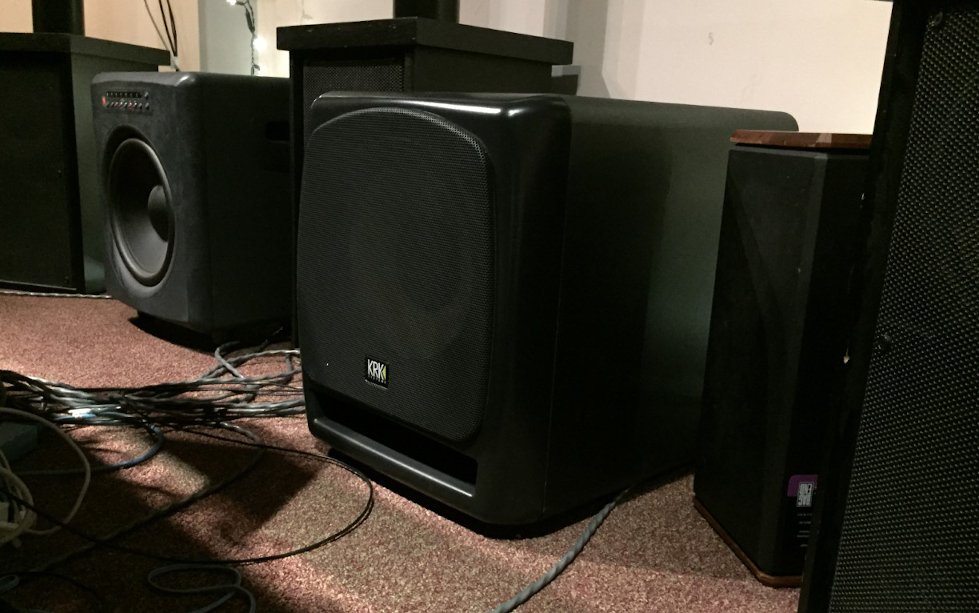A Slick Subwoofer Solution
Serendipity at bedtime and in the control room...
I had a control room solution drop in my lap recently and thought I’d share it with you. For some reason, solutions for recording problems seem to come to me in my sleep or as I’m drifting off, and this was one of those. This one involves developing a way to combine a couple of monitor elements for a combined solution and to do it in a manner slick enough that it would be easy to switch.

UREI 813B/C with the covers removed
The main control room that I've been assigned to for the last twenty-five years has as its main monitors a soffitted pair of UREI 813B/Cs, built right after JBL took over United Recording Electronics Industries (UREI) in 1987. These monitors are known for their smooth, smooth midrange and their excellent time alignment, contributing to a really great stereo sound-stage that lets you localize panned sounds easily. The control room is an unlicensed Live-End Dead-End control room built in 1996 that contributes to the smooth sound-stage as well. With a pinch of room EQ the system is really impressive. The one downside of the UREIs is their very low end: they start rolling off around 60hz. and gently roll down from there, leaving you without a good idea of the level of the thump from the kick drum. I've learned how to compensate over the years. To deal with this issue we recently added a pair of JBL LSR4328P speakers with a KRK 12S2 subwoofer as an alternate array in order to get some bottom end thump and a more modern high-end so I wouldn't have to compensate and estimate.


My company's engineers were busy at the time of the installation of this array so I went with a series "console-->subwoofer-->monitor" connection scheme using the subwoofer's onboard crossover system as an expedient. The array has done really well at its intended role but ever since it went in, and after reading an ARTICLE from Bob Hodas on subwoofing UREI monitors, I've been dreaming of a slick way to merge the KRK subwoofer with the UREI system. I've actually built a subwoofed UREI system at home with a Sony sub under each UREI 811C as a proof-of-concept for Bob Hodas' practices.

It is an old picture, I'll admit.
At work, the hold-up has been that we've got five (count ‘em) audio monitor systems in the control room (plus the studio room's monitors) and the monitor switching scheme is becoming a bit over-complicated. I think the earliest concept for this hack may have originated a while back in the middle of the COVID-19 lockdown. I got called in to engineer a session at the studio after working entirely from home for a few weeks. When I piped a signal throught the JBL/KRK array all I got was thump. I looked at the JBLs and saw that they were off. Everything else in the control room was on except the JBLs. I switched them back on went to work. On another day when I was on lunch break in another part of the building there was a flutter in the overhead lights that told me there had been a power loss and the uninterruptable power supply had taken over. Now, this building has not only a huge generator powered by a locomotive diesel but lives on the back side of an array of batteries that buffer the transition between the power company and the generator. Typically, nothing is affected. But when I went back to the control room, once again, all I got was thump. The JBLs were off and everything else was on. Hah! Got it. The tiny flutter in wall current caused the microprocessor in the monitors to reboot and they reboot to standby mode.
Then yesterday afternoon I was assigned to a music mix session. As usual, as I went to sleep the night before I mulled over the coming session. Out of the blue, the two circumstances became linked in mind mind and an idea for the monitor hack came to me. Yesterday before the session I tried it out. My scheme involved two patch cords and an existing switch. In the patch bay I patched out of the console's main stereo control room monitor feed (UREI array) and into the small studio monitors' input (JBL LSR4328P + KRK 12S2 subwoofer array). That brought in the whole JBL/KRK array in parallel with the UREI array, both under control of the main stereo monitor pot. Then I stepped around the console and hit the power button for one of the networked JBLs, turning off both of them. Voile'! Only the UREIs and the KRK were on. The crossover characteristics between the JBLs and the UREIs are approximately the same. I had electronically and acoustically matched the output level between the two systems as well, so as a result the subwoofer is driven at approximately the correct level to support the UREIs. It isn't instantaneously switchable but can be changed in about ten seconds without any re-calibration.
Wow! I did the entire mix session on the subwoofed UREIs and then unplugged the sub and checked the mixes on the JBL/KRK array and the other monitors in the room. The results were fantastic!!! The blend of the two systems is wonderful and results in the smooth midrange and high-end of the UREIs and a good idea of what is happening in the very low end as well. I'll eventually have to run a Fast Fourier analysis to check the level and phase response of the array, but the initial result are very encouraging.
I don't know why I hadn't thought of this before, but there it is. Pehaps this can encourage you to experiment in the patchbay or dream abut solutions as you drift off to sleep!
UPDATE 08/18/2021

What do you call it when you've got five subwoofers? A "snuggle" of subwoofers?
There has been a little monitor shuffling going on in the plant, resulting in some surplus gear. I saw an opportunity emerge and I took it. A JBL LSR4312 subwoofer became available and I snapped it up to integrate into the JBL LSR4328P secondary array in my room, freeing up the KRK sub for the main array. I talked with house engineer Joe and we put our heads together to do the wiring. We decided to run the main array via the scheme: console-> sub with crossover-> main house EQs> power amps-> main monitors. Joe built the cables and we ran them so now I am doing the electronic integration. The JBLs all network via Ethernet and are controlled via a hand-held remote. The system comes with a microphone and aligns itself with tone sweeps. After that it only needs a little tweakage to reasonably be brought into the ballpark of the mains. Now we are upto our ears in subwoofers. Lovely!
= =
=





